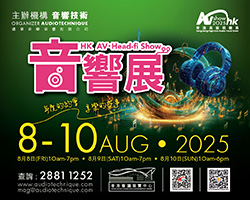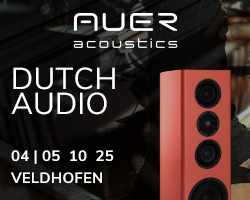Janine Elliot continues her RetroBites series of articles, where she looks at classic audio and Hifi, with the classic QUAD 405 current dumping amplifiers.
Like a few other companies I have already spoken about in Retro Bites the name of this company is rather complicated. The legendary Peter J. Walker in 1936 formed a company in London that was initially called S.P. Fidelity Sound Systems. He then later renamed it to the Acoustical Manufacturing Co. Ltd after a move to Huntington (near Cambridge, UK) after being bombed out of London during WW2, and then finally it became best known as the QUAD brand, which was initially the name for just one of the amplifiers (QUAD 1), made from an acronym ‘Quality Unit Amplified Domestic’. In 1983 the name of the company was officially changed to QUAD Electroacoustics Ltd. The QUAD name has become synonymous with a number of brilliant products over the years, but particularly two, both winning big awards; namely the ESL57 electrostatic loudspeaker and the 405 amplifier up for discussion this month.
The company’s first products were released in 1948. The “quality unit amplifer” QA12 and QA12/P were 12Watt mono valve amplifiers, costing around £30. This was Peter Walker’s first commercial domestic amplifier; a development of the Public Address amplifier that he had been building and selling in pre-war years. The sound quality reproduction was high compared with other products on the market at the time, and they became landmark products in the audio industry, spawning QUAD products being chosen for monitoring at the BBC, and even wagon loads later being used by British Rail at their stations.
The first transistor power amplifier from the company was not the 303 but actually the “professional” number 50 in 1966, from which came the 303 and then the ultimate professional version called the 50E, followed by the iconic 405. The BBC studios have used these and many Quad models since. Needing a reliable unit that required no set up or regulation and which could be listened to for long periods of time made them the obvious choice and I spent twenty-plus years using them daily in my job in BBC Radio. Instrument positioning and general stereo placement made them ideal for music balancing. BBC 405’s were generally a modded bi-amped design, with one amplifier feeding a BBC LS5/8 speaker. Walker is often attributed with the phrase for the perfect hifi system as “a straight wire with gain”, meaning that nothing is added or taken away from the input signal, but this is still a wish rather than a reality, and actually Stewart Hegeman from Harmon Kardon claims that phrase, too, for his Citation amplifiers and omnidirectional speakers.
Where the 45Watt 303 was fine with big loudspeakers of the 60’s, in the 70’s as speakers became less efficient there was a need to create a more powerful amplifier. To do this Peter Walker created a clever idea of Class A front end for the first few watts and then add to that a powerful Class B end for the rest of the power should it be needed, an idea used by so many manufacturers today. The 405 and 405-2 both offer 80 watts per channel into 8 ohms and 100W into 4 ohms, ample for most, and way more than you needed for the iconic QUAD electrostatic ESL57. The numbers of the models have always enchanted me; 303 is 30Wx3 which adds up to 90 Watts (45+45) and 405 is 40 x 5, which neatly adds up to 200W total output. Clever.
Anyone who is serious about hifi will hold the Quad 405 up as one of the highs of the industry past, a power amplifier that anyone entering the world of separates would want among their collection. My school friend, working Saturdays in a local hifi shop when we were both mid-teens had a 405 plus Thorens TD160/SME3 and JBL speakers. I was jealous. All I could afford was a JVC JA-S11G, though that seemed to get reasonable ratings in the mags.
Quad had already visited transistor based power amps, notably with the 303, itself a very able stereo power-amp (I now have two in my collections), but it was by now an old design and I wanted something “the latest”. So I purchased out of my pocket money a Sansui AU-D33, which was a medium-power amplifier with very low distortion, and most importantly for me, their Super Feedforward System. The Quad 405 had a current dumping and feedforward design – more on that later – and I wanted a “small slice” of the 405 in my own system. However, those amps are very different in design, and sound very different too! Whilst the 405 is a very easy-listening and enjoyable amplifier with no fatigue, meaning suitable for long listening sessions particularly in recording and broadcasting studios, it has ended up with the reputation of being a little too lethargic, and for that reason this Current Dumping amplifier has these days perhaps become the currently dumped amplifier. A shame, because it was a great little number and with an excellent bass with low distortion due to that current dumping. By trying to make it bomb proof it did mean this Walker was less crisp than my Sansui, but its authority over the music made it easily my preference. However, limiting its current and filtering out the last octave of the bass are all safety features but do affect the sound. I eventually bought a dilapidated 405 in the 1990’s and rebuilt it, and loved it until I replaced it with a Krell powerhouse.
The American Harold Stephen Black (April 14, 1898 – December 11, 1983) was for me one of the most important names in the electrical world. Not only did he work on negative feedback and feed-forward amplifiers but also on pulse code modulation (PCM), both areas that have changed the audio world from analogue to digital. His negative feedback back can be seen to date back to 1923 (after attending a lecture at the AIEE, but fully created 1927 and first patented in 1929), whilst working for Bell Labs on long US telecommunications lines, trying to reduce the distortion that would build up in long distances. In basic terms the negative feedback system is two amplifiers, with one an amplifier which compares the input and output of the other main amplifier and then negatively amplifies the distortion created to the same amplitude and combines the two signals, cancelling out some of the distortion. Peter Walker even wrote that whereas the basic process of feedback (which had been used in amplifiers for many years) would reduce distortion, only a system of feed-forward could promise zero distortion. Where my Sansui AU-D33 might have sounded much less musical than the Quad 405, its super-feed-forward system reduced that distortion extremely well. Walker’s clever Current Dumping system was revolutionary. In Wireless World 1975 Walker described the basic circuit parameters of the system as simply an npn and pnp transistor joined together at the emitter and which supply the major part of the load current (though the actual 405 circuitry is nothing like this). The current produced is the feed-forward error correction component, and so when this negative element is joined with the main current, distortion will disappear at the output. It is therefore ‘dumping current’ into the load, and ultimately this means the output is reduced. That low power Class A section of around 5W was never perfect but better than the Class B section because it’s a lot harder to achieve very low distortion in high powered amplifier stages. But what Peter did was design a way to compare the high powered output with the original audio input and create the required error correction signal which is then injected back into the audio path to then create the corrected audio, winning him The Queen’s Award for Technological Achievement in 1978. Whilst that initial stage 8-pin op amp wasn’t too bad when the 405 first came to life in 1975, various modifications by DIY’ers in the 1990’s and beyond have made the amplifier even more of an desirable mod by replacing this and other components. Interestingly the updated 405-2 model that came in 1982 used cheaper components but produced a better sound and with a controversial over-load circuitry. This latter feature is load sensitive current limiter enabling it to deliver a maximum current of 8.5A into any load, much higher than the 405-1. Walker’s philosophy of just doing what was good enough to make it good continued with the frequency response of the amplifier; ensuring frequencies outside the audio range don’t hinder the performance of frequencies within. He also used relatively slow devices in the design as he noticed they were more rugged than fast devices, and the design was such that it needed no alignment in manufacture, or later in life.
Much of the inside is taken up by the power transformer and the two large electrolytic capacitors, meaning the two main PCBs – one for each channel – are not complicated and easy to get at and replace, repair or modify. Those aged capacitors will most likely need to be replaced. The PCB’s are easily removable for total replacement or for changing that front-stage TL071 op amp to something a bit more reasonable, such as an OPA134 or OPA604AP, and also modifying some of the circuit, including some resistors and capacitors. There are several designs of modifications, and degrees of modification. If you do buy a 405 check that transformer. If it hums a lot it is probably on its last legs, and the 405 will work best as a door stopper. Also, to be really sure of what year the amplifier was made (or indeed if the label “405-2” on the front is actually real!). Look at the date on the top of the transformer as that will always be correct! Interestingly, the 405 inverts the signal fed through it, relying on a Quad pre-amplifier which reverses the signal so that audio going through that op-amp is 180 degrees out. Therefore, if you don’t have a Quad preamplifier to reverse the signal into the 405 perhaps you should try swapping the negative and positive of both speaker terminals (- to +, + to -). The 405s back in the 70’s and 80’s used 4-pin DIN input connectors and many had the horrible (by today’s standard) sprung loudspeaker terminals, so these are a good idea to be replaced if you modifying the amplifier.
The Quad 405 was a turning point for the Acoustical Manufacturing Co. Ltd, just as earlier was their iconic ESL57. The shape and design was beautiful, with vertical cooling fins on the front panel, copied later by manufacturers such as Crimson etc (OK, the earlier Lecson’s AP1 had fins all the way round), and the sound was meaty and very enjoyable. The design and engineering is iconic and won Walker’s company a Design Council Award 1976 and then again in 1978 gaining The Queen’s Award for Technological Achievement, the only Hi-Fi manufacturer to have won such awards. Where the 303 (running from 1967-1985) had 94,000 manufactured, the Quad 405 (from 1975 to 82) and 405-2 (from 1982 to 93) sold 64,000 and 100,000 units respectively, making them by far the most sold amplifier by the company. Their current dumping philosophy has been handed down to later power amps, such as the 606 and now their Artera stereo amplifier. So, too will Peter J Walker live on in the minds of audiophiles. He might have met his grave in 2003 but his products, particularly those in the first 50 years before being sold to Verity Group and then IAG, will live on for ever, if perhaps needing the occasional service or modification.
Janine Elliot

































































































































































































You must be logged in to leave a reply.